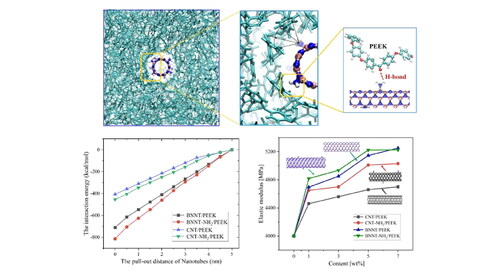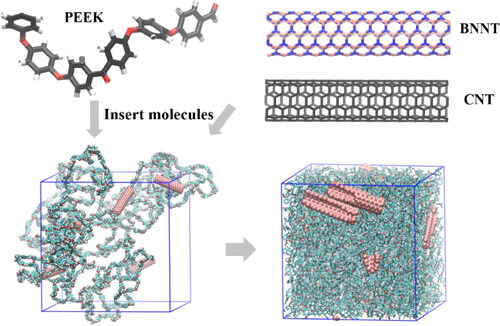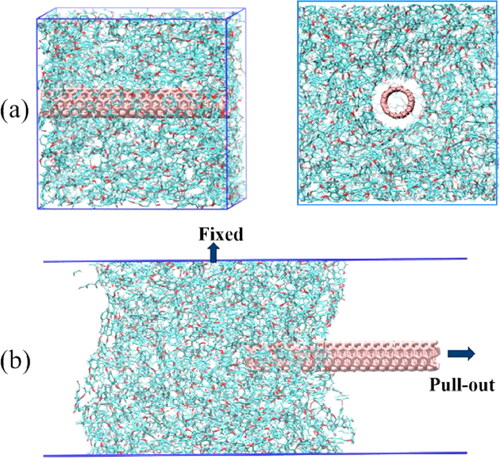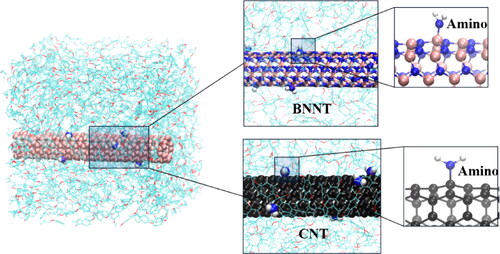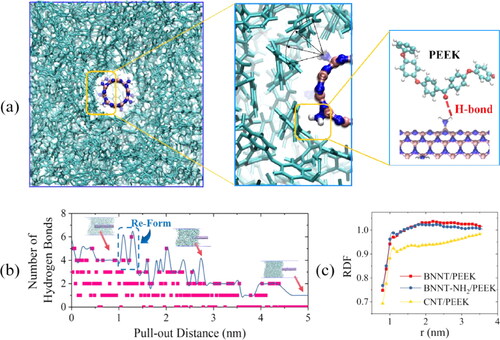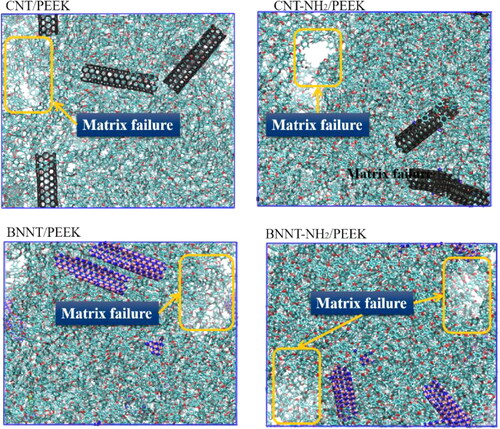Figures & data
Figure 4. Pull-out modeling results of BNNT and CNT reinforced PEEK. (a) molecular configuration during pull-out; (b) change of interaction energy between nanotubes and PEEK; (c) IFSS results of BNNT and CNT.
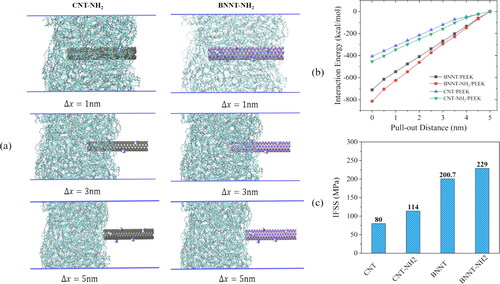
Figure 5. Tensile modeling results of BNNTs reinforced PEEK. (a) provides the tensile curves of PEEK reinforced by different nanotubes; (b) and (c) Young’s modulus and tensile strength of these nanotube-modified PEEK.

Figure 6. Change of interaction energy during the tensile modeling with respect to the content of BNNTs.

Data availability statement
Data are available upon reasonable request from the corresponding authors.

